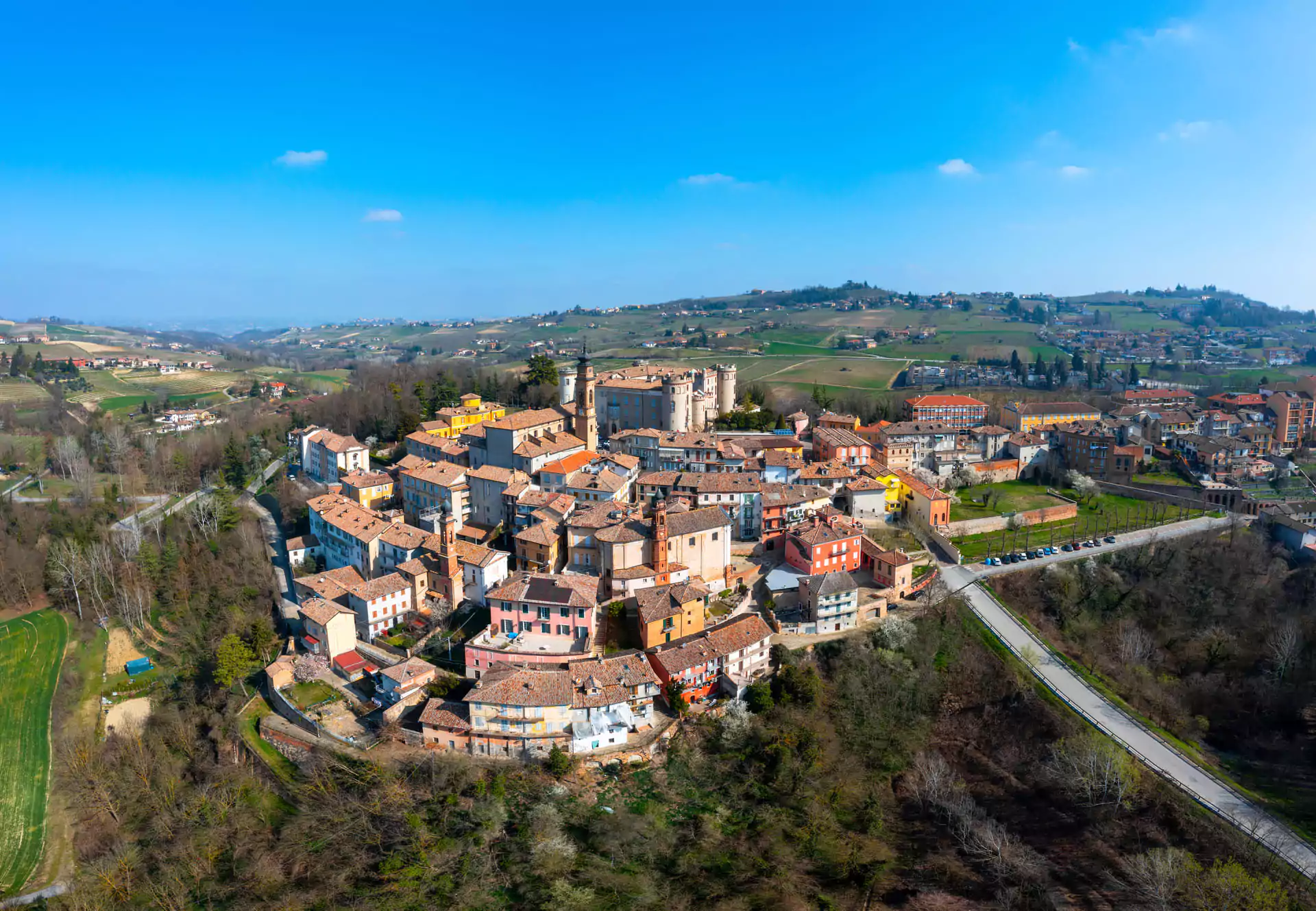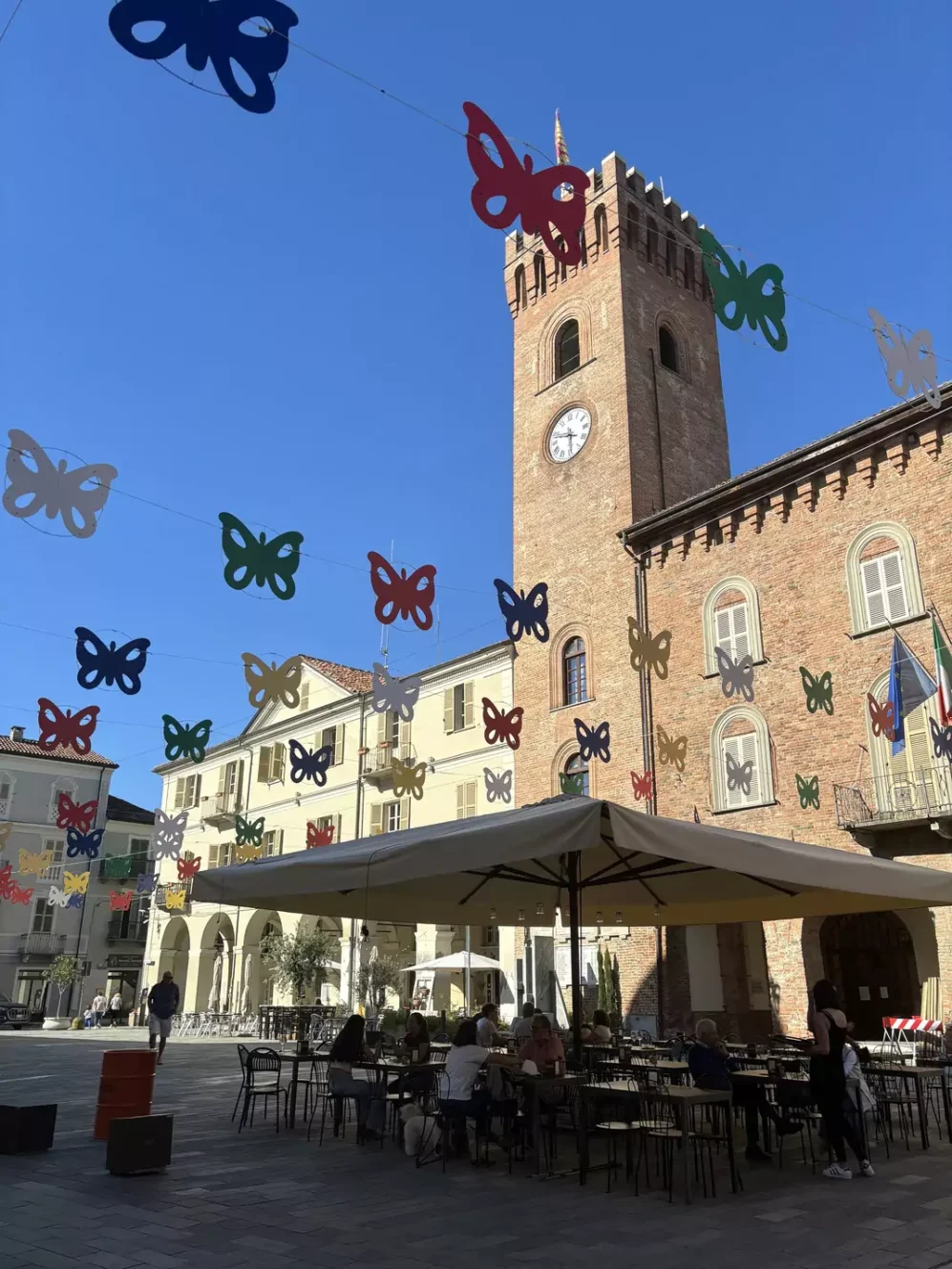Monferrato is a landscape of rolling hills, vineyard-covered landscapes, and ancient towns steeped in history and culture. While it is widely recognized for its exquisite wines, such as Barbera and Nizza, and its UNESCO World Heritage vineyard landscapes, Monferrato also harbors several hidden gems in the form of small, picturesque villages that offer a unique glimpse into the region’s rich heritage and tranquil rural life. These villages, often overlooked by mainstream tourism, are where one can truly experience the soul of Piedmontese culture, gastronomy, and stunning natural beauty. Today we present you 5 of these lesser-known villages that you can easily visit from our villas:
1. Castagnole Delle Lanze
Castagnole delle Lanze, a charming village in Piedmont situated within Asti’s province, finds itself in a delightful spot between the renowned hills of Langhe and Monferrato. Castagnole delle Lanze is an ancient village whose roots date back to the Roman times. Its name comes from a family, Lancia, who lived here in the Middle Ages.
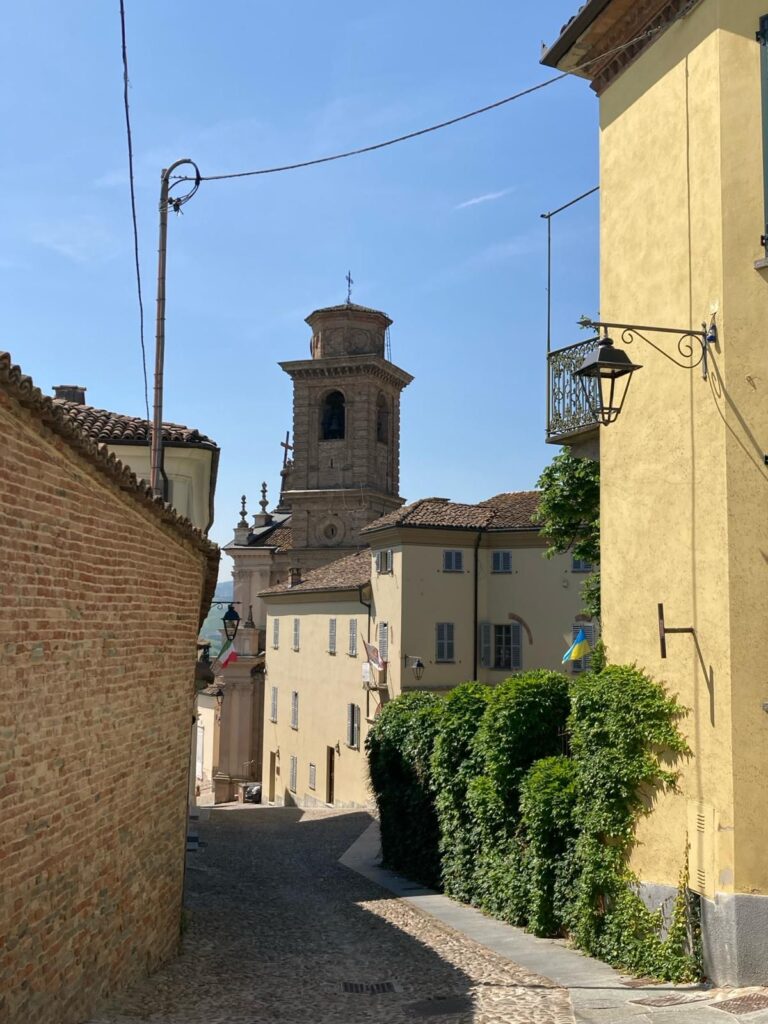
When you visit Castagnole dell Lanze, start in the old part. There’s a street called Via Ener Bettica with colorful arches painted by Vincenzo Piccato. On the other side of the road Beppe Gallo, a local artist, turns regular house numbers into little art pieces.
We suggest visiting the old church San Pietro in Vincoli, it looks plain outside but is full of beautiful decorations inside. Furthermore, there’s a nice walk to Piazza Balbo, where you can find the now-deconsecrated Church of San Giovanni. Events, temporary exhibitions, and cultural festivals have been held inside it for several years.
Finally, also worth visiting is the green heart of Castagnole delle Lanze, the Parco delle Rimembranze, located in the historic heart of the village, immersed in the peace and colors of the vegetation. The park, dedicated to the Fallen of the First World War, is home to the Tower of Count Paolo Ballada of Saint Robert, built on the ruins of the ancient castle, which during fine weather allows views over the entire Langhe and Monferrato.
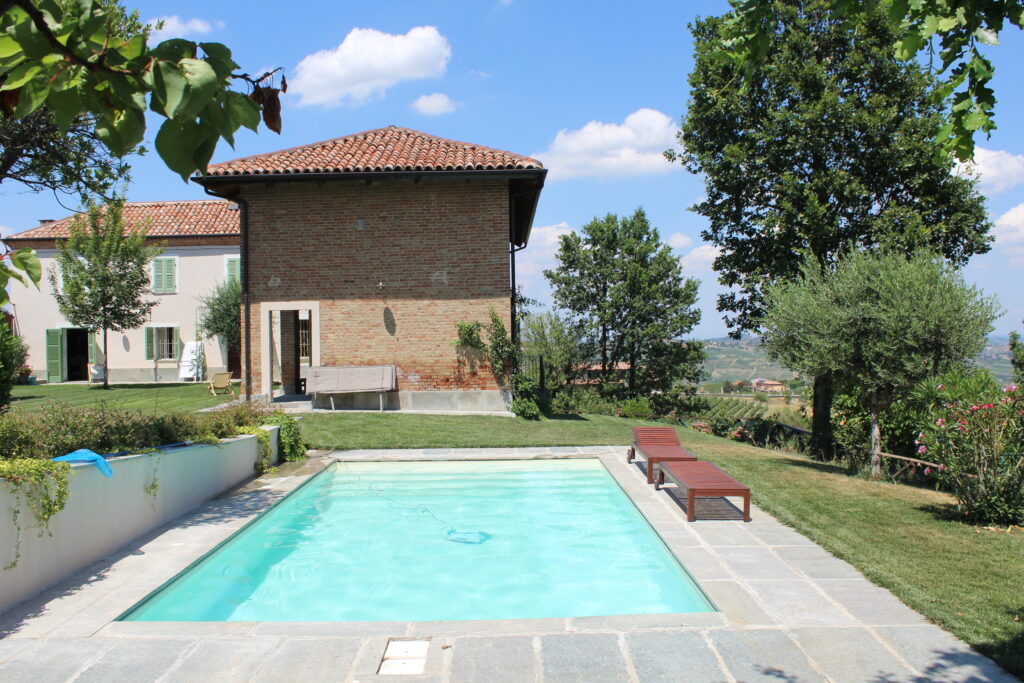
Visit Castagnole delle Lanze from Casa Valentina
2. Costigliole d’Asti
The wine village Costigliole d’Asti is located on the border area of the Langhe and Monferrato wine regions. The pride of the village is ‘La Rocca’. At the top of the hill in the center, the imposing castle with its four round towers stands beautifully. Costigliole d’Asti owes its name to its location; loosely translated, it means the strip of lime trees. It is a contraction of costa (coast) and Il tiglio (linden).
The townscape of Costigliole d’Asti is defined by his imposing and intact medieval castle. The imposing building dates from the mid-13th century and is partly still inhabited.
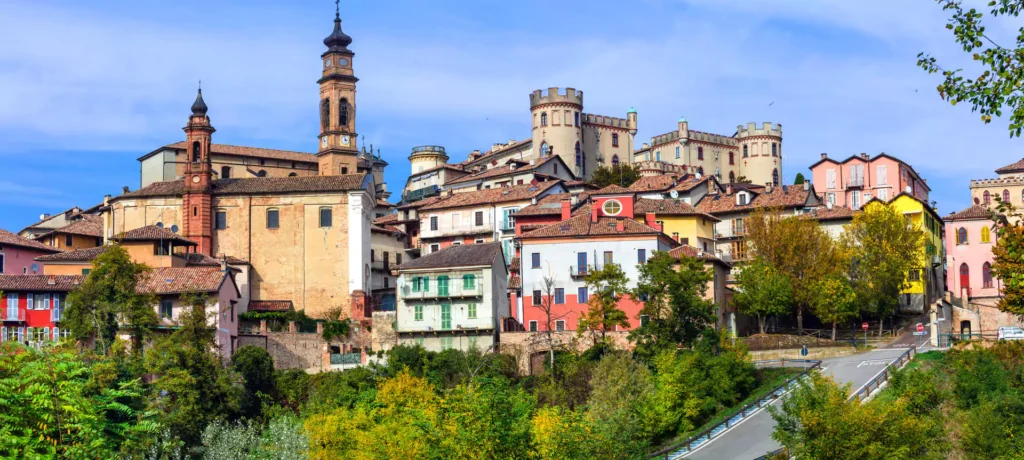
The castle houses the international cookery school where chefs from all over the world take cookery courses. It is also home to the “Noi di Costigliole d’Asti Association”, an association of 43 wine producers from the area who organize wine tastings and co-organize the Rosso Barbera festival every year.
Exhibitions take place regularly and the castle garden is often the venue for film and theatre plays during the summer months. Costigliole d’Asti is also home to several nice coffee bars, an excellent wine bar, and fine restaurants. Every Sunday there is a local market with vegetables, fruit, and other local products.
You can easily visit Costigliole d’Asti from Villa Perla in the hamlet Bionzo.
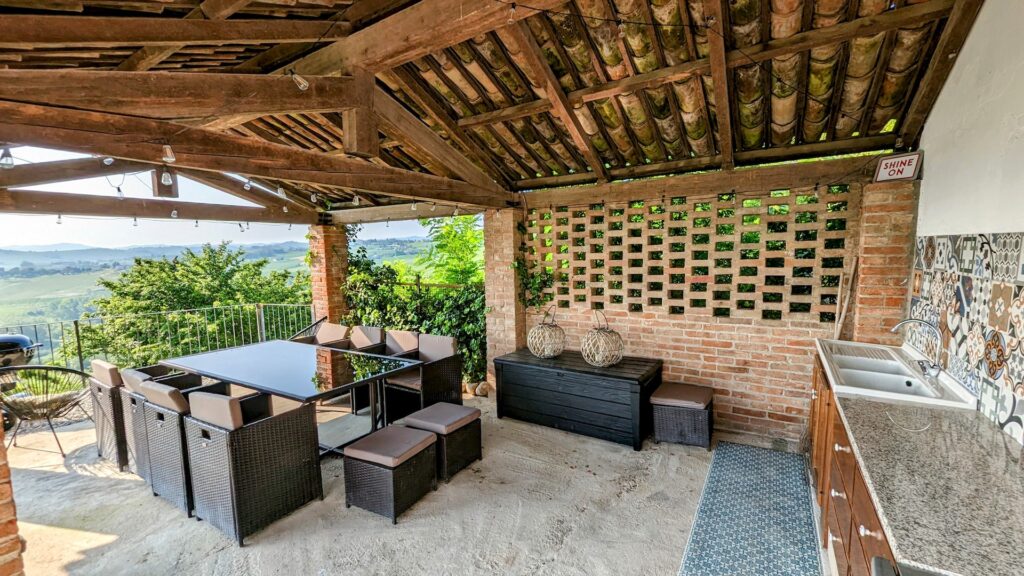
3. Calosso
This little colourful village is truly a hidden gem! The characteristic medieval village is dominated by the castle and the church of San Martino. This has always been a land of great wines: 380 wineries, and 1000 hectares of vines on the 1238 of the entire Calosso territory. Calosso is also the setting for the ‘Fiera del Rapulè’ (Rapulè Fair), which takes place each year by Mid October and attracts thousands of people to the village over several days. In these days tourists come from all over northern Italy and abroad (!) to celebrate the harvest of the ‘late’ grapes, the ‘rapulin’, bunches of grapes that were not picked during the harvest because they were not yet ripe. It is also an opportunity to taste traditional Piedmontese dishes and wines from local producers.
From Casale Mon you have a splendid view of this beautiful hilltop village.
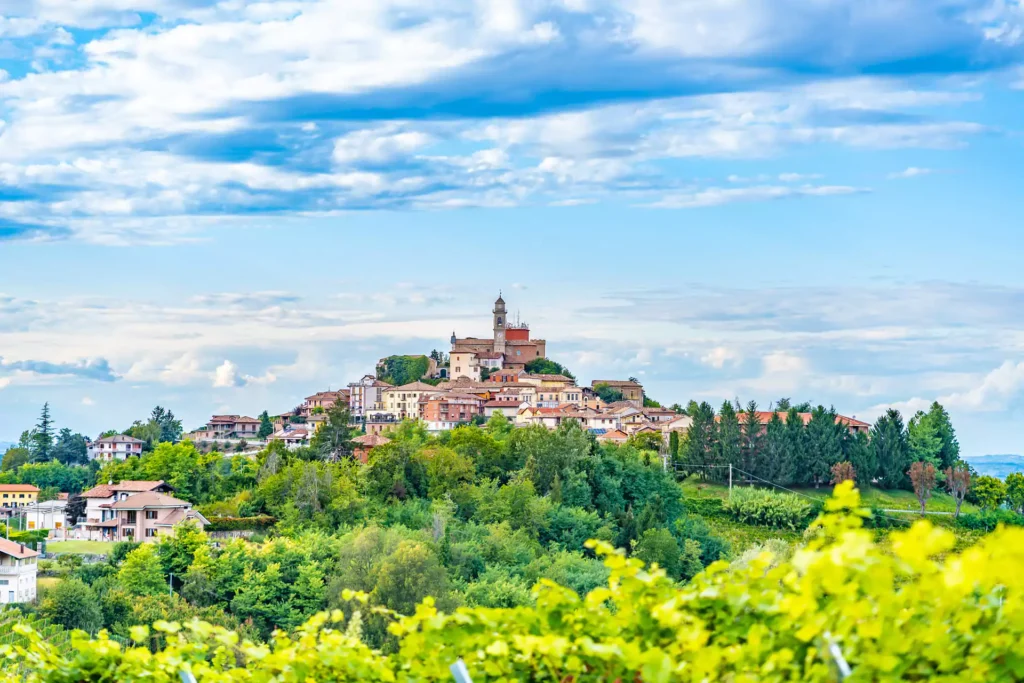
4. Fontanile
Between Nizza Monferrato and Acqui Terme you find the charming village of Fontanile. The name Fontanile echoes the abundance of natural springs that were once found throughout the surrounding area, with its Latin root ‘fontanilis’ translating to ‘land abundant with spring waters.’ The village’s historical connection to water is still evident in several places: the ancient communal washhouse, the well inside the fort, and the drawbridge on Marconi Street.
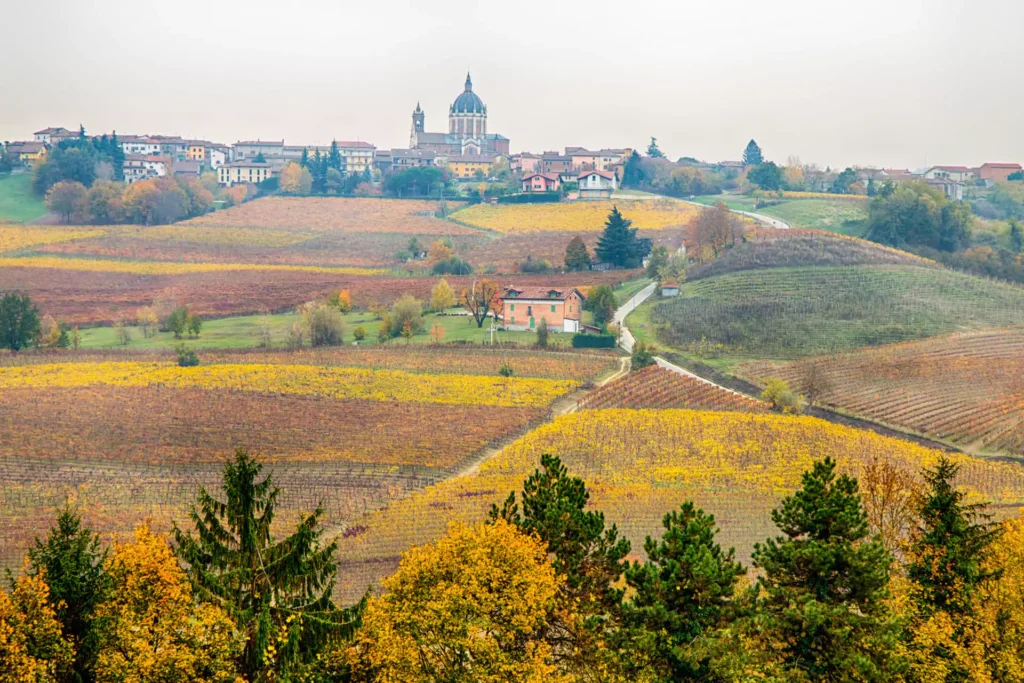
Today the village is famous not only for an almost perfectly preserved historic center, but above all for the splendid murals by local painter Luigi Amerio, which liven it up. As part of a municipal project called ” I Muri Raccontano “
Strolling the streets of Fontanile, one is captivated by the vibrant murals that seem to spring to life: it’s as if you can hear the echoes of children at play in a game of hide and seek, the lively banter of homemakers, and the contemplative conversations of seniors perched on benches, all set to the backdrop of rural sounds. Among these, a particular mural stands out, commemorating Francesco Cirio, the innovative Italian businessman who, in the latter 1800s, revolutionized the preservation of food by pioneering the canning process, thereby spreading the fame of fine Italian cuisine across Europe.
You have a beautiful view of Fontanile from Casa Gris.
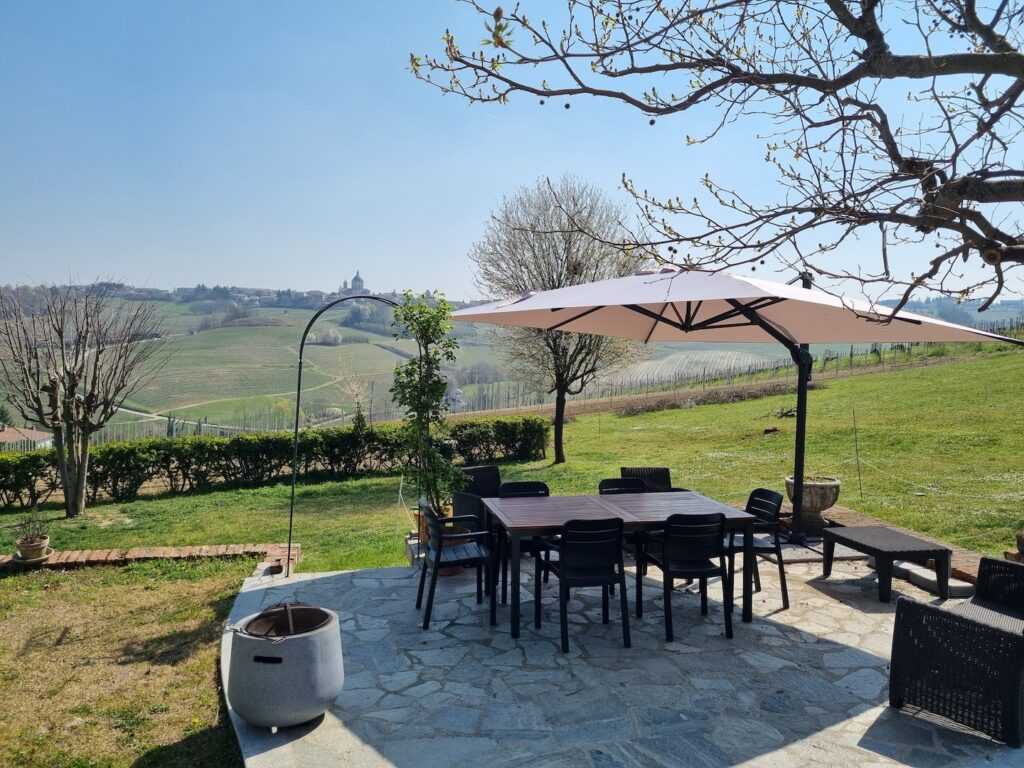
5. Castelnuovo Calcea
Castelnuovo Calcea, a charming Piemontese village with ancient roots, is situated about 10 km west of Nizza Monferrato. The village’s name originates from the combination of “Castrum Novum” (new encampment) and the term “ad calcarias,” likely referring to the proximity of the road running alongside the Nizza Monferrato stream. Historical records trace back to 1142, indicating Castelnuovo Calcea’s medieval origins.
The castle grounds, under Solinas ownership from the mid-seventeenth century to the mid-nineteenth century, transitioned to the Beneck family in 1870 and remained under their possession until 1939. Presently, the castle is the property of the town, which acquired the site in 1985 and initiated restoration efforts.
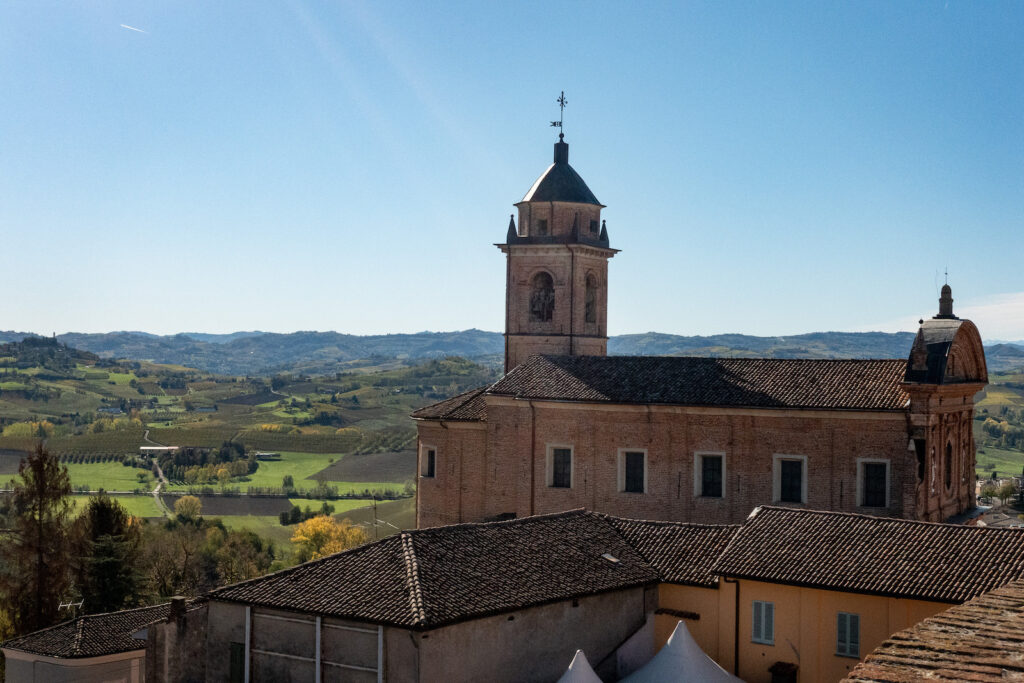
Today the spacious courtyard across from the castle hosts numerous public events, and the original underground pathway provides access to the elevated area, now serving as a public park and viewpoint. Just a short distance from the castle, you’ll find the prominent Baroque church dedicated to Santo Stefano, featuring a striking exposed brick facade adorned with a portico of slender columns. This is a favorite wedding location for many Italian couples.
Dedicated to the rich agricultural heritage, especially in winemaking, is the “Nido della Memoria” (Nest of Memory) museum. Here, you can explore a comprehensive display of tools and instruments once utilized by local farmers and artisans, offering a glimpse into the region’s historical agricultural practices.
Only a few footsteps from the historical centre of Castelnuovo Calcea lays Cascina Toetto.
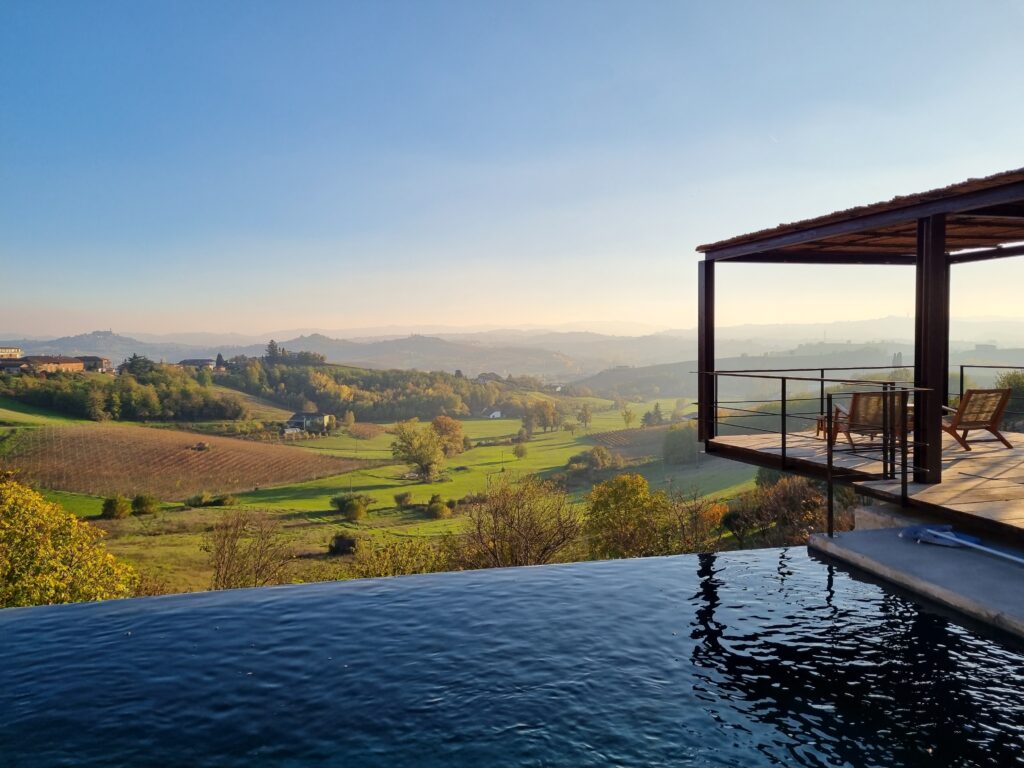
If you want to discover more about Piedmont and stay in one of our villas, please take a look at our website www.vivapiedmont.com, or send us an email to info@vivapiedmont.com. We would be happy to share with you our love for this beautiful region.
